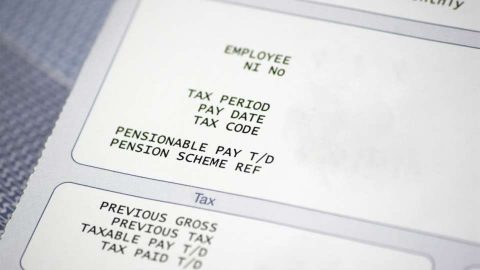Applying lean principles to your finance team
More and more businesses are waking up to the fact that customers want sustainable products from sustainable companies. According to the Nielsen report, this includes everything from labour practices to the environmental impact of production.
So, what can the average company do to enhance their own sustainability? And why bother?
My company works with companies across the globe to embed lean processes and systems into their core, with an emphasis on improvements within finance teams.
We have noticed that a by-product of these projects is the improved sustainability of the company as a whole. Although sustainability has strong connotations with environmental performance, we believe it’s important to acknowledge the inclusion of the full triple-bottom-line; people, planet, profit.
The end customer
Overproduction, sometimes called over processing in service environments, is simply producing too much, too little, or ‘just-in-case’. It is well-known for being the most lethal of the ‘wastes’ because of the knock-on effect it has to other wastes. A waste is defined best by the Lean Way as “any action or step in a process that does not add value to the customer. In other words, waste is any process that the customer does not want to pay for”.
The finance team should be regarded as a service environment, there to serve the internal and external stakeholders (i.e. their direct customers) using data and information from their direct ‘suppliers’.
They should examine:
- Customer
- Supplier
- finance team
The starting point for any lean analysis is to define what the customer wants, and not just your assumptions of what they want. Even when remotely looking at the finance team’s activities, consider the end customer. What would they be willing to pay for?
They may well be willing to pay for your monthly management reports that are analysed to increase profit and reduce cost, so that potential savings may be passed onto them or additional profits reinvested to improve services. But they probably won’t be willing to pay for those reports which are produced because ‘they always have been’ and offer no useable insight into company performance or direction.
Now drill down into your direct customer’s needs based on this new knowledge. Understand what they truly need and when they need it.
Where the data comes from
The next point to examine for overproduction within the finance team is the input, i.e. where the data/information is coming from. This could be another department, an external source, an ERP system etc. Is there enough trust within your team on the integrity of this data? A lack of trust can lead to asking for more information than is required and requesting it sooner than it is needed to counteract the distrust. Stop. The onus needs to be on the ‘supplier’ of this data or the source needs to be changed. Do not allow duplication of efforts, instead change the placement of those efforts.
Finally, look at the overproduction happening within your team. Toyota engineer father Taiichi Ohno was said to require new managers to spend several hours in a chalk circle, standing in one place and observing waste. Translated, this could be encouraging job shadowing or bring in members of other teams to pinpoint ‘waste’ areas. Look for badly implemented automation as thorough scenario testing may have been omitted. Your team may be adding extra steps or activities which do not add value for either the end customer or the direct customer, e.g. a complex sign-off process involving numerous managers.
People, planet, profit
Within these three areas consider the triple-bottom-line to understand how the overproduction wastes impact the sustainability of people, the planet, and profit:
People:
- Artificial pressures may be placed on work rates
- Bonus systems may be encouraging unnecessary output
- There could be excessive lead time for producing output
- What is delivered may be beyond customer’s requirement
- Information may be provided before the customer is ready
- Information may become obsolete and demotivate the team member(s) that produced it
- Requirements may change while existing information is being processed, due to the length of time it takes to produce
- Team member(s) could be exposed to harmful printer chemicals
- Unnecessary increase in number of tedious tasks, such as filing and repetition
- Automatic sending or receiving of information even when not required
Planet:
- Printing reports/documents and transporting these to suitable storage can cause extra emissions and wasted paper (which is more harmful to the environment than plastic to produce)
- You can release additional cash to spend on the research and development of environmentally beneficial policies and procedures by reducing the overproduction waste
- Going beyond customer’s requirements by printing hard copies, or even extra copies “just-in-case”
- Creation and delivery of required storage solutions (i.e. filing cabinets and folders)
- Energy to power storage facility or even additional space within your office
Profit
- Delays cause deterioration of data/information
- Overproduction increases the chance of mistakes/defects
- Reducing the overproduction waste can free up cash
- You may be exposed to higher storage costs for filing unnecessary documents (even electronically)
- There could be extra costs of disposal/recycling
- Out of date or defective information can lead to bad strategic decisions
The task is not simply to eliminate waste, it is to prevent its occurrence in the first place. Some ideas that my team have implemented with a successful outcome includes running month end as a project. Conduct a project review on what went well and what didn’t go well to understand some of the overproduction wastes.
Stop insisting on nine to five hours. Innovate and use a demand-pull system. This may mean more hours around month end closedown and less hours during the rest of the month so that the team aren’t pointlessly producing work to fill the time.
Comply with ISO 9001 standard which will ensure you have established effective and efficient processes that are consistently followed and improved upon.
There are many options to improve sustainability by preventing overproduction and over processing. It is important to link sustainability to people, the planet, and profit, and for us to share in our experiences of what works well and what doesn’t.
Please use the comments section to help each other become more sustainable and I hope to share further explorations of other lean principles with you soon.













